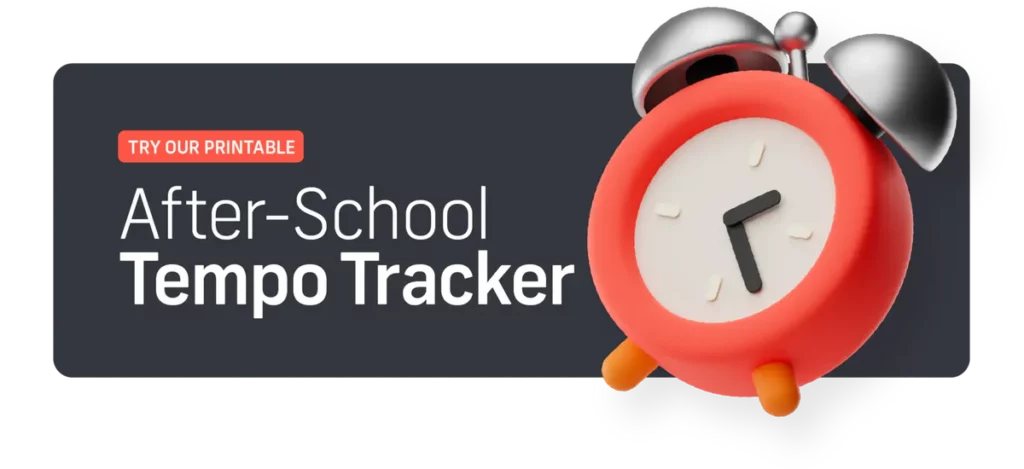Navigating after-school schedules can be challenging. Between homework, activities, and downtime, both parents and kids often struggle to find a rhythm that’s productive yet enjoyable. Enter the Pomodoro Technique—a super simple study method that promises to not only streamline your young one’s afternoons, but also boost learning and retention.
What it is
Developed by Francesco Cirillo, the Pomodoro Technique enhances productivity through 25-minute focused work sessions, separated by short breaks. This method is celebrated worldwide for its effectiveness in improving concentration and preventing burnout.
How it works
- Set a Task: Choose what you need to complete.
- Start a timer: Set it for 25 minutes of focused work.
- Work: Focus Solely on your task until the timer rings, then mark your progress.
- Break: Take a 5-minute break to relax.
- Repeat: After four Pomodoros, enjoy a longer 25 minute break.
- Review & Repeat: Assess your progress. adjust if needed, and start the cycle again as necessary.

Studies in cognitive science support the method’s underlying principle—that frequent breaks can significantly enhance concentration and mental agility.
It’s not just about working smarter; it’s about learning more effectively and enjoying the process, making it perfect for children of all ages. With this tool in your arsenal, afternoons become less about stress and more about productive, enjoyable engagement. Let’s unpack how you can make it work for your child at any age.
For the Little Ones: Juniors (Preschool to Grade 3)
At this stage, kids are just getting used to school routines, so their attention spans are shorter. Instead of the standard 25-minute focus sessions, think smaller. A good rule of thumb is the child’s age plus one minute of focused activity. So, for a 5-year-old, a 6-minute focus period followed by a 3-4 minute break can work wonders.These shorter bursts help maintain their enthusiasm without overwhelming them. Breaks can include playful activities like a quick dance-off, a snack, or a puzzle. To make this even more exciting, we’ve designed a printable Tempo Tracker with scannable QR codes that open up to fun, age-appropriate activities and content.
The Magic Middle: Tweens (Grades 4 to 7)
As kids grow, so does their ability to focus. Tweens can handle slightly longer periods of concentrated effort—think 15-20 minutes. After each session, a 5-minute break to stretch, grab a quick snack, or even play a short game helps them reset their energy levels. For tweens, our specially designed Tempo Tracker not only guides their focus periods but also links to exciting break activities via QR codes. These might include quick science experiments or trivia quizzes, to keep their minds engaged and bodies active.
Onwards and Upwards: Seniors (Grades 8 to 12)
Older students are gearing up for more serious study sessions. Here, the traditional Pomodoro setup—25 minutes of focused work followed by a 5-minute break—is ideal. After four Pomodoros, a longer 30-minute break is recommended to truly decompress and prevent burnout.For these students, technology can be a fantastic aid. Introducing them to the Flocus Webpage can help them manage their sessions more efficiently. Our downloadable Tempo Tracker for this age group also includes QR codes leading to intellectually stimulating content from sources like TED Ed and SciShow, perfect for the longer breaks, and guaranteed to keep their downtime wholesome and growthsome.
Getting Started
- Start by downloading our printable schedules above.
- Set up a dedicated area where your child can study without distractions.
- Explain how the timer works, and most importantly, let them see you respect their focus time—this teaches them the importance of concentration and discipline.
- Adjust the focus periods according to your child’s feedback. Some days they might need more frequent breaks, and that’s okay. The key is to make the process enjoyable and rewarding, to help foster a lifelong love for learning and structure.
Happy focusing!
We’d love to hear how the Pomodoro Technique works for your family! Try it out, tweak it, and get in touch with us on social media, to let us know your success stories or challenges.
After all, every child is different, and discovering what best helps them focus and thrive can sometimes be a fun experiment in itself.
